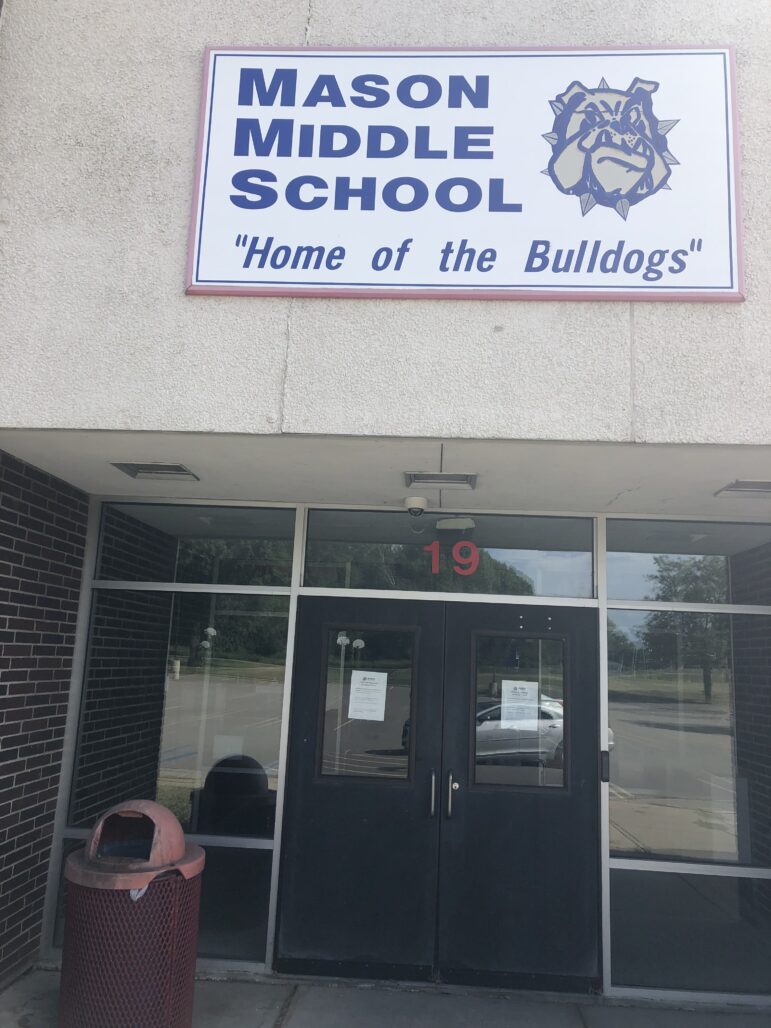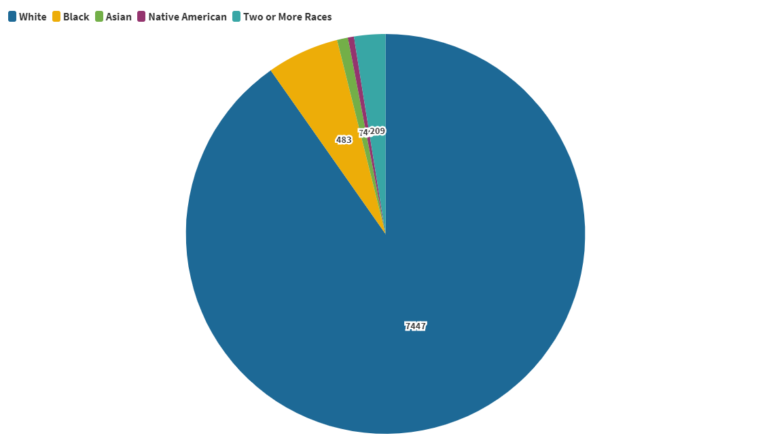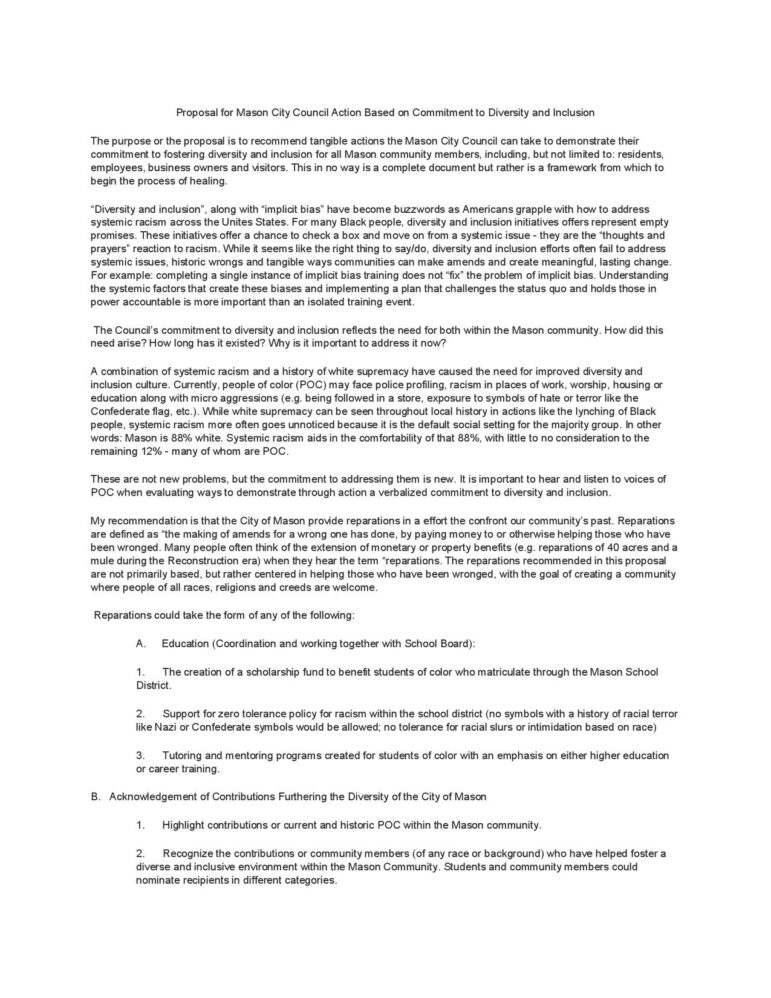Paul Kato has spent the last 20 years of his life as the media and information teacher at Mason High School and has dedicated his life to teaching Mason students. He was the only Black teacher on staff when he was hired in 2000, and remains the only black teacher in the school district despite the demographic shift that has taken place in Mason over the past two decades.
As the nation has become engulfed with protests following George Floyd’s death at the hands of the Minneapolis Police Department, a conversation has sparked within Mason as well. Mason has the fastest-growing minority population in Ingham County according to the U.S. Census, but Kato said he believes that Mason has a long way to go before the town is fully accepting of minorities.

“I do think Mason is a great place to live and raise your children, and I have loved my life here,” said Kato. “But, we still have a long way to go before Mason is truly appealing for minorities to move here and take jobs here because Mason is seen as a traditional town that does not have many people from the outside.”
The Mason City Council and Mayor’s Office has said at multiple city council meetings this summer that promoting diversity within all parts of the city is crucial.
“We have been meeting weekly to discuss how we can make Mason a better place for everyone, not just people that have lived in Mason their entire lives,” said Marlon Brown, the Mayor Pro Tem of Mason. “We are working hard to reduce the amount of implicit bias within our government and police force, and I know the school board has been having these conversations too.”
According to the 2010 U.S.Census, Mason’s residents are 93% white, with every other major racial group’s numbers below 3%. However, according to the 2000 U.S. Census, Mason had 3,000 fewer residents, and 96% of them were white. Growing industries such as Dart Container and Gestamp Automotive within Mason are a large reason for the increase in population as well as diversity in Mason.

“Every year, I see more and more minority students within the high school hallways,” said Kato. “And I think we are letting them down by not having teachers or faculty that look like them and can relate to them on a more personal level than my white coworkers.”
Kato said that he has made many appeals for those in charge of the hiring process for Mason Public Schools, but says that he feels his requests have fallen on deaf ears.
“Whenever I have those conversations, I am told that no minorities apply, so we can’t hire them,” said Kato. “ Frankly, that is not good enough. We have to look at why minorities do not want these positions and try to make a change for our students.”
Elijah Sanford, a 2018 Mason High School graduate, said he believes that Mason as a whole does not have a widespread issue with race within the school system, but needs to do more for minority students.
“I went to Leslie before I moved to Mason in high school,” said Sanford. “Leslie is like 99.99% white and has a lot of racist a-holes, so Mason was a huge improvement. There were other black students that I could relate to and there were not nearly as many racist kids. I mean there were still issues with some people, but it was not a widespread issue like my old school.”
Sanford said that the lack of descriptive representation at Mason didn’t really strike him until he went off to college.
“I didn’t have a black teacher until the second semester of my freshman year at Jackson,” said Sanford. “And it’s crazy how much that made an impact on me as a black guy. I could relate to the teacher in ways I didn’t know I could relate to a teacher. I think if I had that growing up, I would’ve cared more about school and grades.”
Ian Boston, another 2018 Mason graduate, said he believes that the “traditional” mindset of many Mason people is the reason why Mason is lagging behind in issues regarding race and diversity.
“Mason is not a racist town, but there is a good number of racists who live in Mason,” said Boston. “People here do not interact with black people while they grow up, and they lack the proper knowledge of how to interact with people of different races. When I moved to Mason in middle school, it was a huge culture shock after going to Holt growing up. I was in a sea of white people, and some of them did not like that I was there.”
Boston said that his biggest problem with Mason as a city was not within the schools, but rather when you were a black man on the streets of Mason.
“Walking around Mason alone as a black guy is scary,” said Boston. “Cops will follow you in their car, or random people will ask what you are doing like you don’t belong. That is why I always stuck with my friends in the band to avoid that kind of stuff. The high school was the most comfortable place for me in Mason.”
Brown, who is a part of a diversity subcommittee for Mason Public Schools, said that the shift needs to begin as a whole within the city to change the reputation.
“From the outside, Mason is seen as a place where you grow up and you live your adult life there,” said Brown. “That is what I believed when I first moved here and I learned quickly that Mason is rapidly changing. Some residents have lived in Mason for generations and their family will continue to live in Mason for a long time, but there are many people who live here because it is a great little suburb with a great and supportive community.”
Steve Crandall has been a lifelong Mason resident and said that his town has come leaps and bounds in terms of racial tolerance from when he was in high school.
“Being a black teenager in Mason in the 80s was not the same as it was to be a black person in Mason now,” said Crandall. “I had issues in high school with different people because I was one of few black kids in Mason and people didn’t like that. Now, I feel very safe living as a Black man in Mason and being a part of a multi-racial family.”
Crandall said that he would have left Mason if he felt like there was any danger towards him or his family because of the color of their skin. Also, he said that he believes that diversity is not an issue for him or his children within the schools, but adding more diversity could only be a good thing.
Brown said that the city council will discuss the city’s plan moving forward on how to promote diversity within the community and within the government of Mason itself.
“After George Floyd’s death, we sprang into quick action because we did not want to have a similar incident happen in Mason,” said Brown. “Immediately, we made a change to our city ordinances to ban the use of chokeholds that killed Floyd and no-knock warrants that were used in Breonna Taylor’s death to ensure the safety of our residents. Also, every person within the Mason Police Department had to watch the Floyd video multiple times and go through racial sensitivity and implicit bias training.”
Brown said that the issues of race and diversity will be talked about for the remainder of the city council meetings in 2020, and is one of his main issues of focus.
Kato said that he attended one of the virtual city council meetings in early June following Floyd’s death, and was not pleased by the plans and proposals that the council had come up with in terms of diversity.
“For me, what they were saying was not enough,” said Kato. “There was no passion behind the words and the plans were not good enough for me. I reached out to Mayor (Russ) Whipple and we had a four-hour conversation and I composed my own plan for what Mason needs to do going forward.”

Kato’s proposed plans include an overhaul to the police force and increased diversity training for everyone that holds a public position within Mason as a form of reparations for Black people who have suffered from systemic racism.
“We are at a crossroads right now as a country and as a town too,” said Kato. “Our actions moving forward will have a massive impact on the future of our little town and I want us to be on the right side of history.”